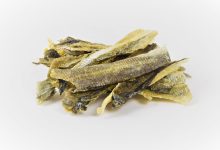Emergence of Eco-Friendly Fashion in Seasonal Trends

Fashion seasons denote specific timeframes within the fashion industry that dictate the prevailing trends and styles in clothing. Traditionally, two primary seasons exist: Spring/Summer and Autumn/Winter. Nonetheless, with the advent of fast fashion, additional seasons have emerged, fostering an incessant cycle of novel fashion trends. Unfortunately, this has led to significant waste and unethical practices within the fashion realm.
However, a promising trend has emerged to counteract these adverse effects: sustainable fashion. This movement strives to produce fashion conscientiously, taking into account both humanity and the environment.
Strategizing Your Collection for Fashion Seasons
When planning a collection for fashion seasons, it’s pivotal to consider ongoing trends and upcoming shifts. Yet, in the sustainable fashion domain, factoring in the ethical and environmental implications of the collection is equally vital. This entails opting for sustainable materials, ensuring ethical labor practices, and minimizing waste during production.
Deciphering Sustainable Fashion Trends
Sustainable fashion trends encompass shifts in consumer behavior and industry practices that advocate sustainability. These span diverse facets, from the surging popularity of second-hand clothing to augmented usage of recycled materials in new attire.
6 Noteworthy Sustainable Fashion Trends
Recycled Clothing: Transforming old or discarded garments into new creations diminishes waste and curbs the need for fresh materials.
Second-Hand Fashion: Embracing second-hand clothing diminishes the ecological footprint of wardrobes, prolonging the lifespan of garments and lessening demand for new ones.
Rental: Fashion rental services gain traction, allowing individuals to sport trendy outfits without purchase, thus reducing landfill-bound clothing.
Repair: Mending clothes rather than discarding them post-damage extends their lifespan and diminishes waste.
Upcycling: This innovative practice entails repurposing discarded materials into novel, valuable items, fostering unique, sustainable fashion pieces.
Natural Fabrics: The adoption of biodegradable, natural fabrics like cotton, linen, and hemp rises, surpassing synthetic materials that take centuries to decompose.
Ethical Fashion: Beyond environmental considerations, ethical fashion encompasses the entire product lifecycle—sourcing, production, and end-of-life disposal. This incorporates fair trade, sustainable production, and the preservation of artisan crafts.
The Role of New York Clothing Manufacturers
clothing manufacturers in canada, exemplified by The Fifth Alliance Global trading Ltd, wield pivotal roles within the sustainable fashion sector. Crafting the garments we don, including trending fashion dresses, these manufacturers bear the potential to significantly impact the environment and society. By adopting sustainable practices in producing these vogue dresses, they contribute to steering the industry toward a more sustainable trajectory.
The Future of Sustainable Fashion
The sustainable fashion sector burgeons, spurred by heightened consumer awareness regarding clothing’s environmental and societal repercussions. As more individuals opt for sustainable fashion, the trends delineated above will likely persist.
In summation, sustainable fashion transcends trendiness; it embodies a movement toward an ethically and ecologically conscious fashion domain. By electing to embrace sustainable fashion, we bolster this movement and effect positive change on a global scale.
The Paradigm of Sustainable Attire
Clothes sustainable denote garments produced in an eco-friendly and socially responsible manner. This encompasses materials, labor practices, and beyond. As consumer awareness regarding their purchasing impacts grows, the demand for sustainable clothing expands. This shift compels the fashion industry to prioritize sustainability, fostering a positive transformation that harmonizes creativity, style, and environmental stewardship.








